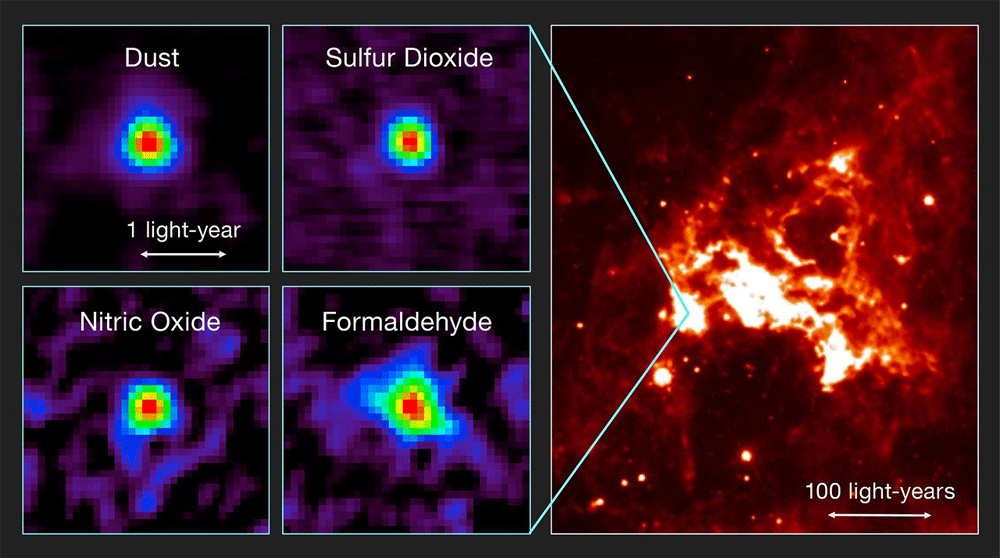Astronomy's 'Dark Horse' Lit Up By Hubble
The Hubble Space Telescope reveals the Horsehead Nebula in the infrared, where it looks dramatically different from most visible-light views. Image credit: NASA, ESA, and the Hubble Heritage Team (STScI/AURA).
The Horsehead Nebula, as taken from a ground-based telescope at Kitt Peak. Alnitak (Zeta Orionis) is just off-screen to the left. Image credit: T.A.Rector (NOAO/AURA/NSF) and Hubble Heritage Team (STScI/AURA/NASA).
The great Orion molecular cloud complex, with the Orion Nebula below the belt and the Horsehead Nebula between the belt’s first and second stars from the left. Image credit: Rogelio Bernal Andreo, under a c.c.a.-s.a.-3.0 license.
The Horsehead Nebula and the neighboring Flame Nebula can be seen both flanking the bright star Alnitak in Orion, but it’s Sigma Orionis, to the right of the horse’s head, that lights up the Horsehead Nebula. Image credit: ESO and Digitized Sky Survey 2. Acknowledgment: Davide De Martin.
The dark Horsehead Nebula, with the red emission nebula behind it and the blue reflection nebula where new stars live at its base. Image credit: Ken Crawford, under a c.c.a.-s.a.-3.0 license.
The pillar-like structures of gas and dust are present in the horse’s head, along with low-mass stars, as revealed by Hubble’s infrared capabilities. Image credit: NASA, ESA, and the Hubble Heritage Team (STScI/AURA).
A deep look inside the base of the Horsehead Nebula shows newly forming stars that will eventually dominate this region’s view once the dust has been burned off. Image credit: NASA, ESA, and the Hubble Heritage Team (STScI/AURA).
With seven times the light-gathering power and the capability to see wavelengths more than 10 times as long as Hubble, NASA’s James Webb Space Telescope, launching in 2018, will peer inside these nebulae as never before.
Forbes Welcome
Wiki:
Der
Pferdekopfnebel ist eine 3
Lichtjahre große
Dunkelwolke im
Sternbild Orion. Von der Erde ist der Nebel ungefähr 1500 Lichtjahre entfernt und erscheint deshalb ein Viertel so groß wie der
Erdmond.










